Last month, I went to Vienna on an art trip and I visited Upper Belvedere which is the museum hosting Gustav Klimt’s most iconic artwork: The Kiss. And to my surprise, the museum had a pretty extensive collection of Klimt’s work from his early days of practice to his late years as one of the most prestigious Austrian pioneers of art.
Last week, I visited the kunsthistorisches museum and again, came across Klimt’s work on both the interior of the museum and as exhibited paintings and I realized how unfair it is for an artist like him to be known for one single artwork.
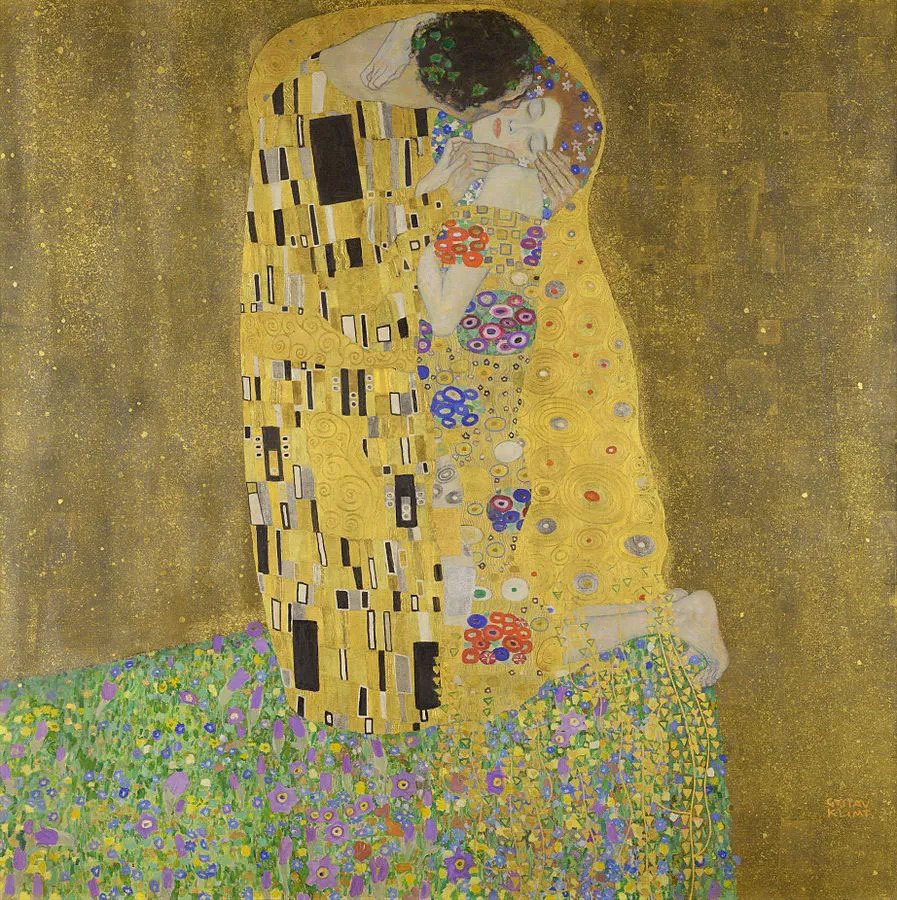
The kiss
The world knows Gustav Klimt for The kiss, and after seeing a great selection of his work in Vienna, dare I say, it is more of a curse than an achievement for him. The kiss is overshadowing the whole career of Klimt and drawing all the focus to a style he created that is necessarily the closest to the average viewer. Let me therefore, share with you some of his paintings that I absolutely discovered lately and adored.
Artworks by Gustav Klimt nobody talks about
Let’s start with this hyper realistic masterpiece titled Portrait of a woman, created between 1893 and 1894. The way Klimt painted the details of the tapestry on the wall, the woman’s porcelain complexion and her jewellery is beyond what my eyes could grasp at that moment of observation in the museum.
Gustav worked in highly realistic style in the years around 1890 but his realistic work was overshadowed by the symbolism that later followed.
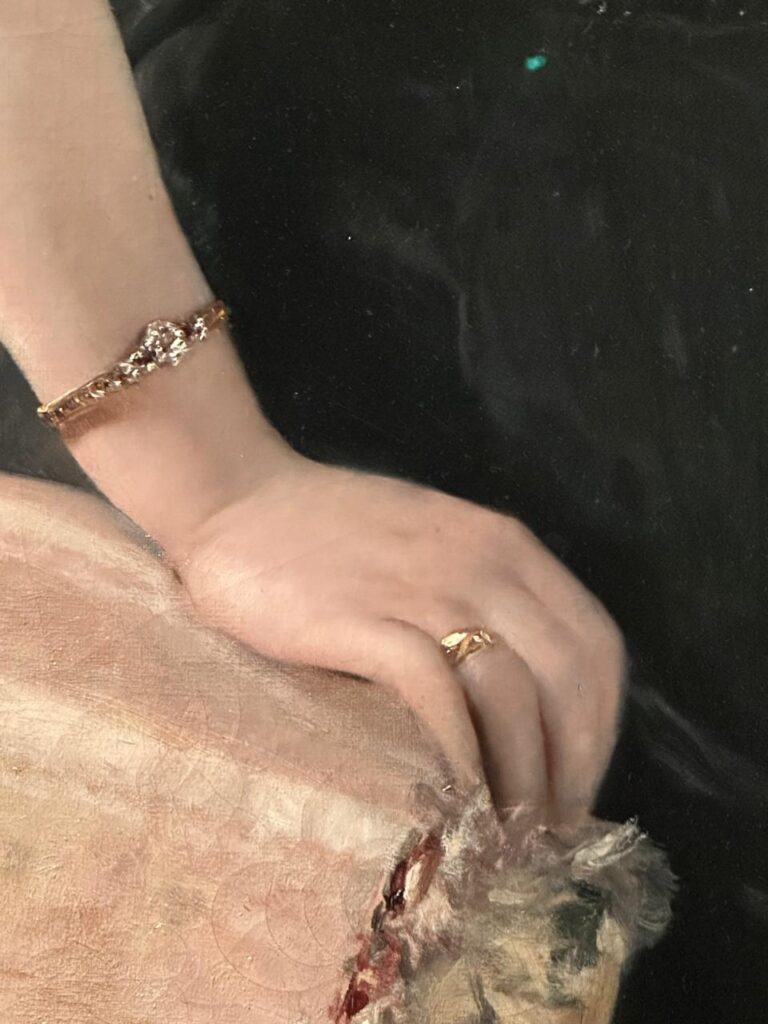
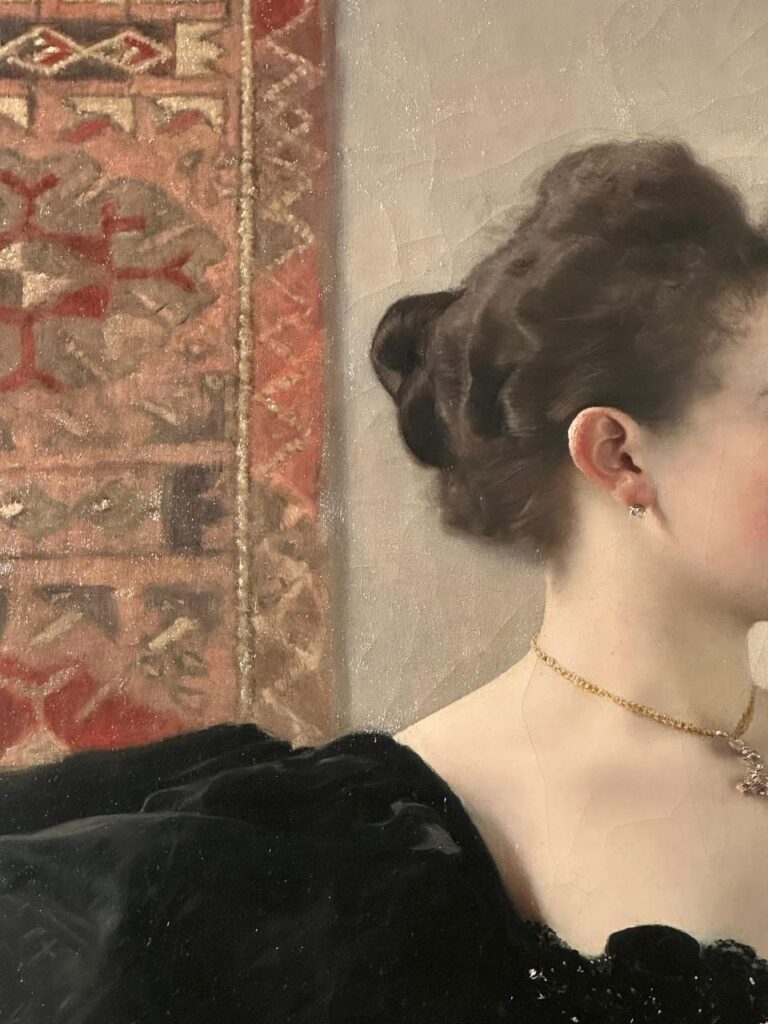
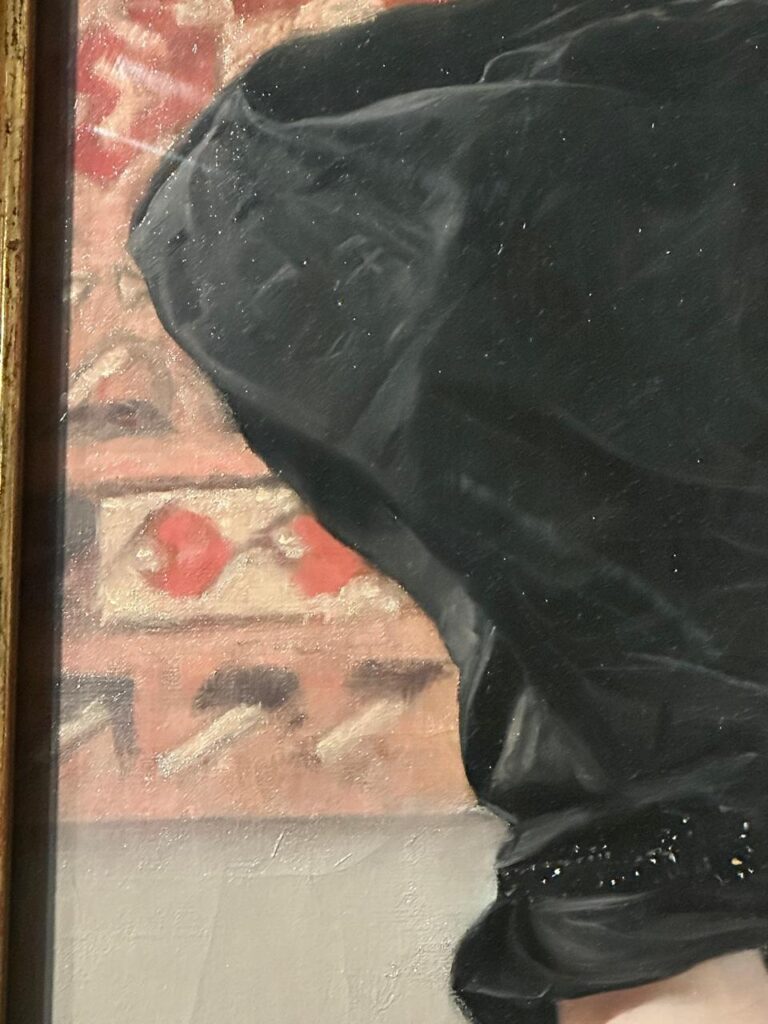
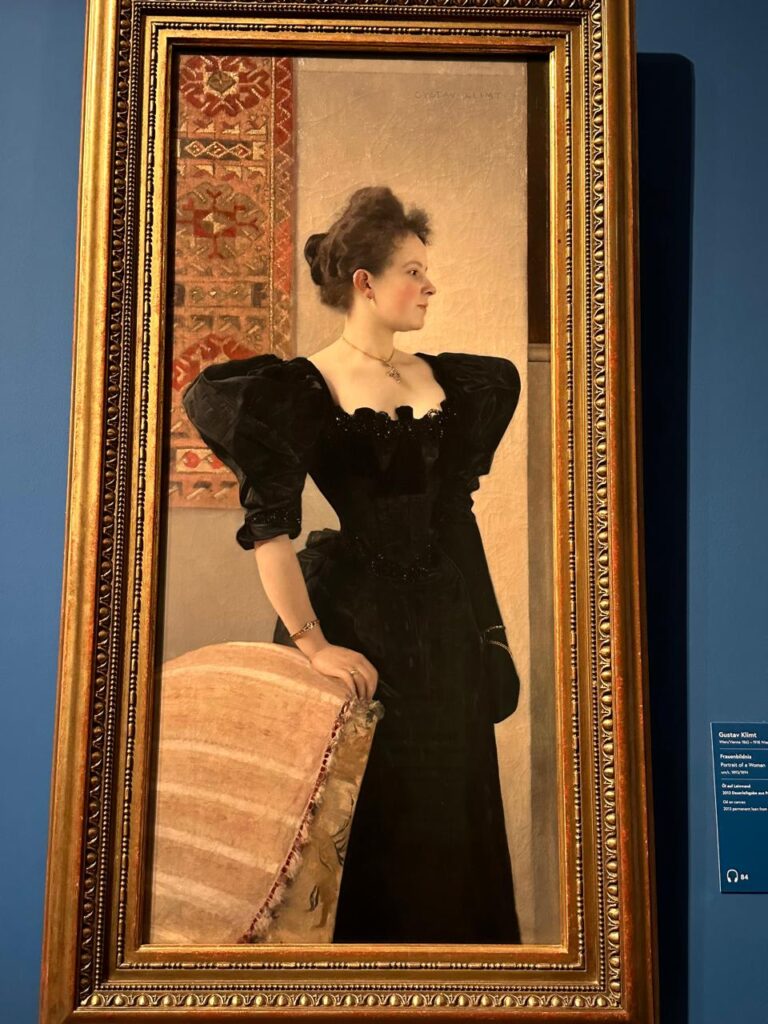
Judith by Gustav Klimt
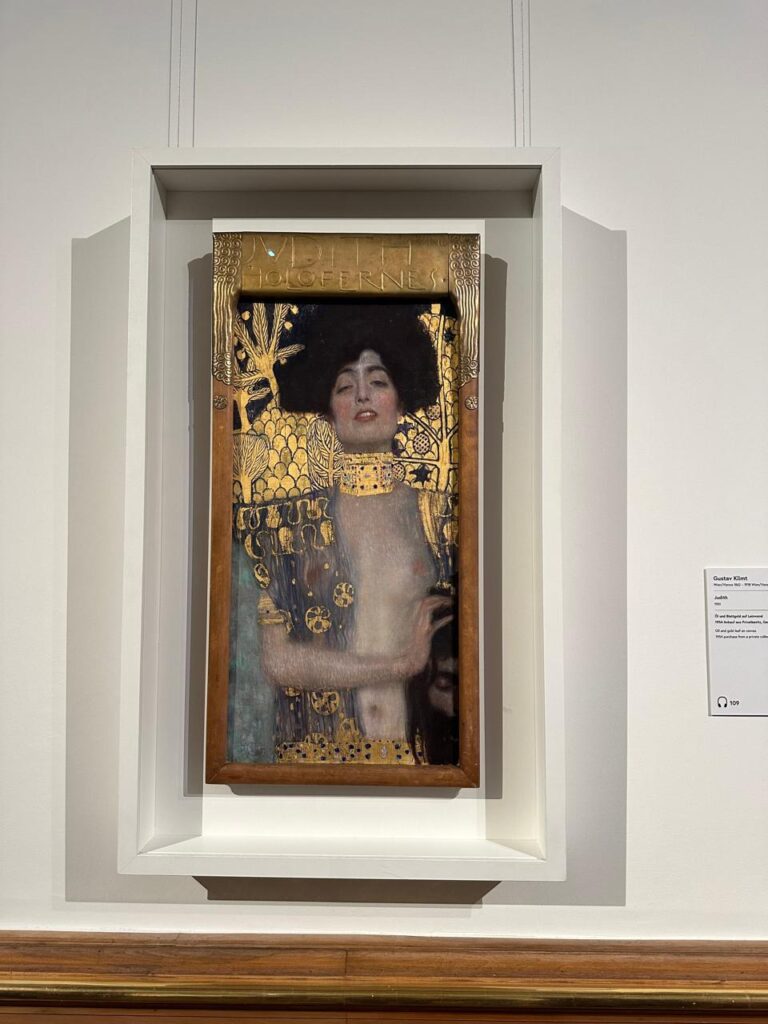

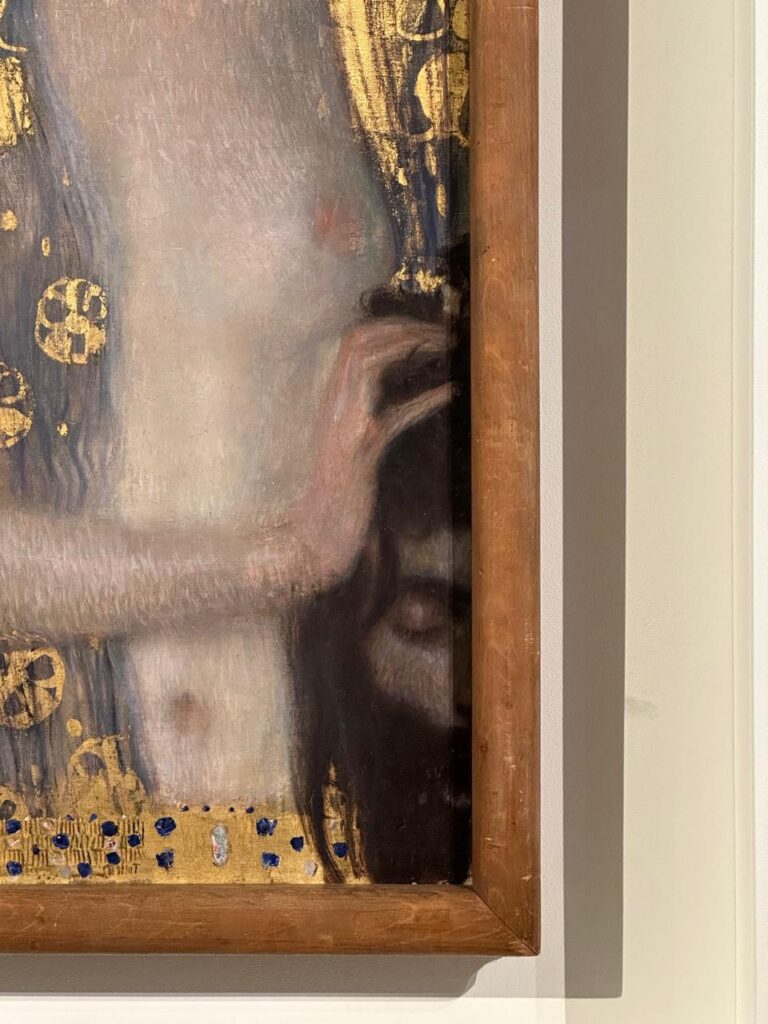
In this artwork, Klimt recreated the biblical story of the brave Judith who beheads the commander Holofernes setting her people free. This painting is very powerful. At first sight, you see a femme fatale, a sexy feel to the figure with the nudism enhancing it even more. Maybe you wouldn’t even pay attention to the fact that she is holding the head of the Holofernes if you do not closely inspect the painting. Klimt made the painting less about the aggressor, and the resistance and the politics to an artwork celebrating a tantalizing icon of femininity.
Fritza Reidler by Gustav Klimt
This is a rather famous artwork by the painter, however, not famous enough in my opinion. Fritza (the model) is depicted naturally, with a more symbolic background rather ornamented by wavy lines and ancient Egyptian eye motif. The interplay between depth and an emphasis on the picture plane characterizes Klimt’s work from the Golden Period.
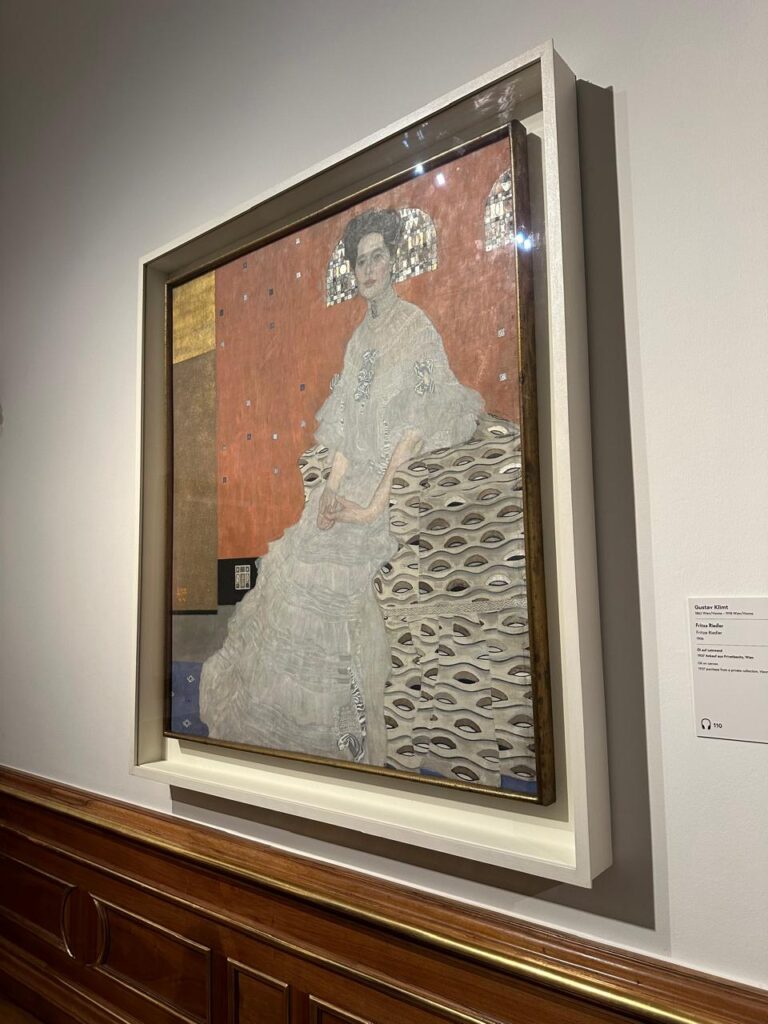
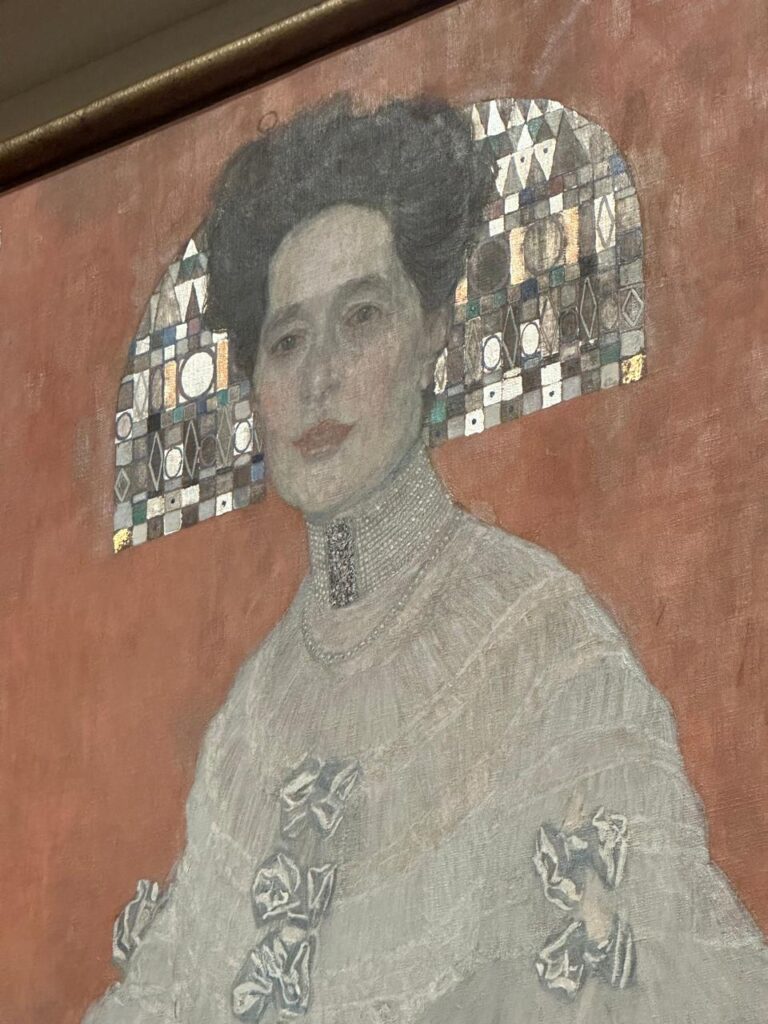
Sonja Knips by Gustav Klimt
This painting impressed me so much in person. Sonja’s face is rendered naturalistic, while her sumptuous tulle gown dissolves in a cascade of soft brushstrokes. Leaning slightly forward, she sits on the edge of an armchair ready to rise at any moment. The red sketchbook in her hand adds the perfect accent of a bright color. An absolute masterpiece.

The artist’s landscapes
Klimt’s landscapes are so underrated that I never knew he painted any. For the Villa on Attersee painting, the foreground flowers with the black around the edges is giving the scene an incredible depth, there are also some details displaying life around the house, such as open shutters and windows, the intimation of curtains, and even a bunch of red flowers on a windowsill, but there are no people. Which is unlike Klimt, as he is more of a portraitist in my opinion and loves people as subjects for his work.
As for farm garden with sunflowers, it is a very cheerful painting. It somehow reminds me of Van Gogh’s work but in a happy way. The flowers are integrated in a well-considered manner, in the ingenious relationship of their refined coloration. In order to draw attention to – or amplify – their impact, a green meadow is counterpoised.
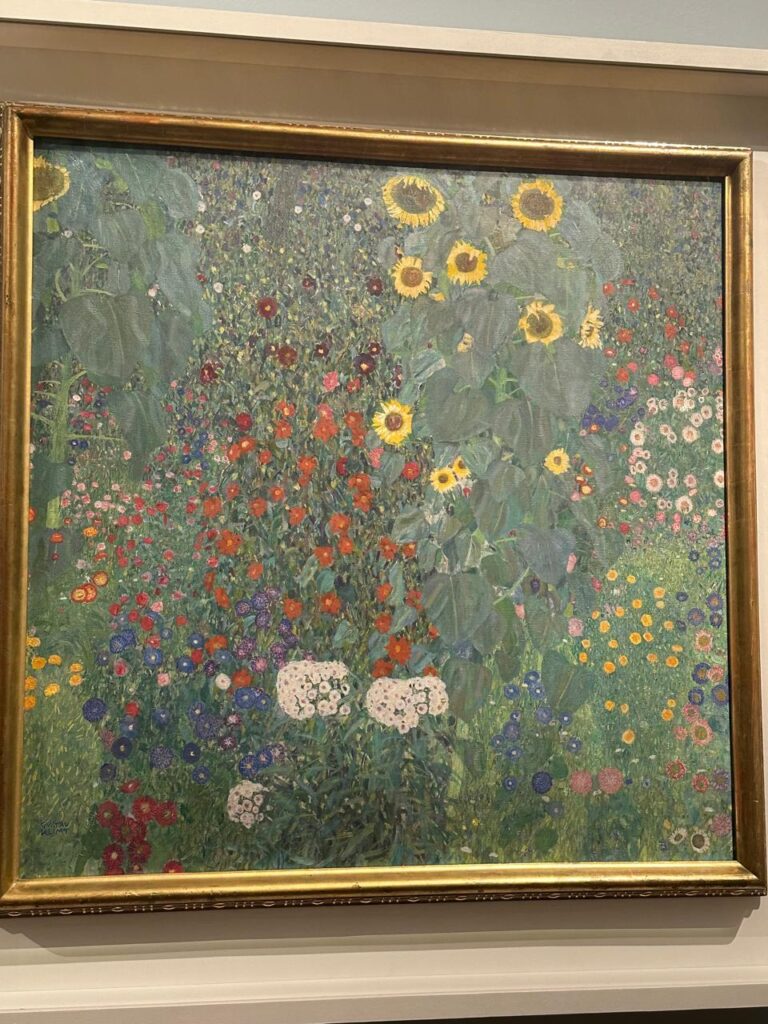
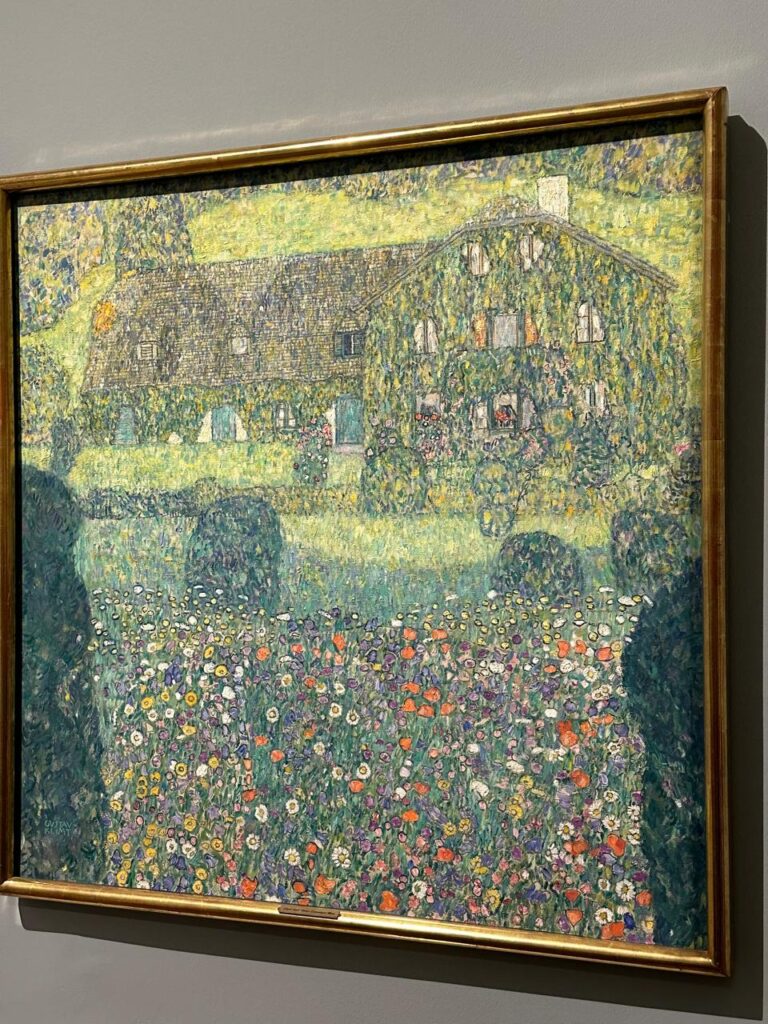
The murals in kunsthistorisches
Gustav Klimt painted the murals at the grand staircase of the Kunsthistorisches Museum in Vienna, along with his brother Ernst Klimt and Franz Matsch, in the early 1890s. These works were part of a larger decorative project for the museum, showcasing allegories of different artistic traditions from various cultures.
Klimt’s murals specifically depict personifications of historical art styles, such as Egyptian, Greek, Roman, and Venetian Renaissance art. He designed them to celebrate the evolution of art and its cultural significance, fitting for a museum dedicated to artistic treasures. While the paintings were collaborative, Gustav Klimt’s signature style is already visible in the details, foreshadowing the golden, ornamental aesthetic he would later become famous for.
These murals mark an important phase in Klimt’s career, transitioning from academic realism to the more decorative and symbolist approach he later embraced. If you visit the museum, you can see them adorning the stairwell, blending harmoniously with the grandeur of the space.
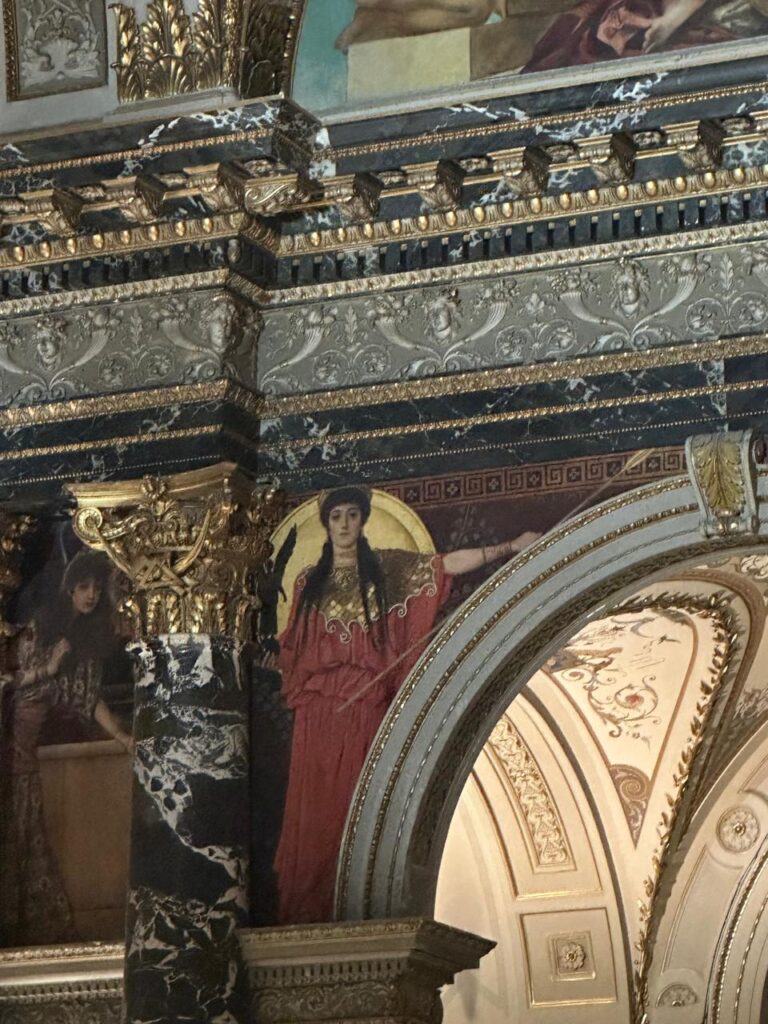
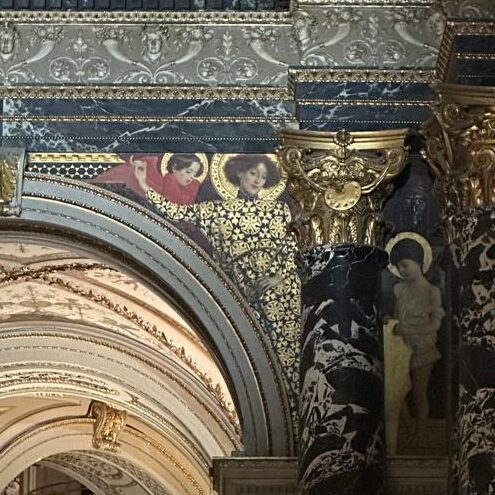
Conclusion
Klimt is one of the artists I always knew about, but never got to truly experience their art in person until my latest visits to Vienna, and I feel like I missed a lot on his mastery. So, this is your reminder and mine to travel around more, see more museums and get to discover other artists. But most importantly, enjoy creating <3



Have you watched “The Lady in Gold”???
No, but I will make sure to watch it soon.